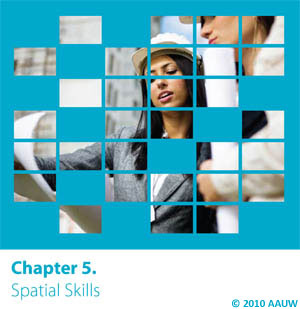


In one of their first studies, engineering professor Sheryl Sorby and mathematics educator Beverly Baartmans administered the Purdue Spatial Visualization Test: Rotations (PSVT:R) along with a background questionnaire to first-year Michigan Technological University engineering students. The results showed that previous experience in design-related courses such as drafting, mechanical drawing, and art as well as childhood play with construction toys such as Legos, Lincoln Logs, and Erector Sets predicted good performance on the test. Another factor that predicted success was being a man. Women were more than three times as likely as their male peers to fail the test - 39 percent of the women failed compared with 12 percent of the men.
 Sorby then selected a random sample of students who failed the PSVT:R to participate in a pilot offering of a spatial-visualization course she and Baartmans had developed with funding from the National Science Foundation. For 10 weeks, these students took a course that included two hours of lecture and a two-hour computer lab each week. At the end of the course, students took the test again. The results were remarkable. Students' test scores - both women's and men's - improved from an average score of 52 percent before taking the class to 82 percent after taking it.
Sorby then selected a random sample of students who failed the PSVT:R to participate in a pilot offering of a spatial-visualization course she and Baartmans had developed with funding from the National Science Foundation. For 10 weeks, these students took a course that included two hours of lecture and a two-hour computer lab each week. At the end of the course, students took the test again. The results were remarkable. Students' test scores - both women's and men's - improved from an average score of 52 percent before taking the class to 82 percent after taking it.
Sorby and her colleagues continue to offer the spatial-visualization course to engineering freshmen who fail the PSVT:R. Students' test scores consistently increase by 20 to 32 percentage points after taking the course, even after it was condensed into a one-credit class that meets for a total of only 28 hours.
Other universities are now offering the course, and the National Science Foundation has funded the Women in Engineering ProActive Network (WEPAN) to make the course available to students at 30 additional universities by 2014. In addition, any individual interested in improving her or his spatial skills on his or her own can purchase a workbook that Sorby and her colleagues created.
I find it empowering to know that something like spatial-visualization skills that are often considered to be innate can actually be learned with not too much effort.


Share
CloseEmail your Friend
© 2014 Nature Education














